Broccoli, with its vibrant green florets and sturdy stalks, is more than just a nutritious addition to our meals. Beneath its verdant exterior lies a captivating story of reproduction and survival. But have you ever paused to wonder about the pollination secrets of this cruciferous vegetable?
Does broccoli self pollinate? The short answer is: Not typically. It’s an outcrossed plant, requiring cross-pollination for successful fertilization and seed production. Insects, especially bees, play a crucial role in this process. While rare instances of self-pollination can occur, broccoli is generally self-incompatible. For seed savers and gardeners, understanding this pollination process is essential to ensure the production of pure broccoli seeds and prevent unintentional crossbreeding with other closely related plants.
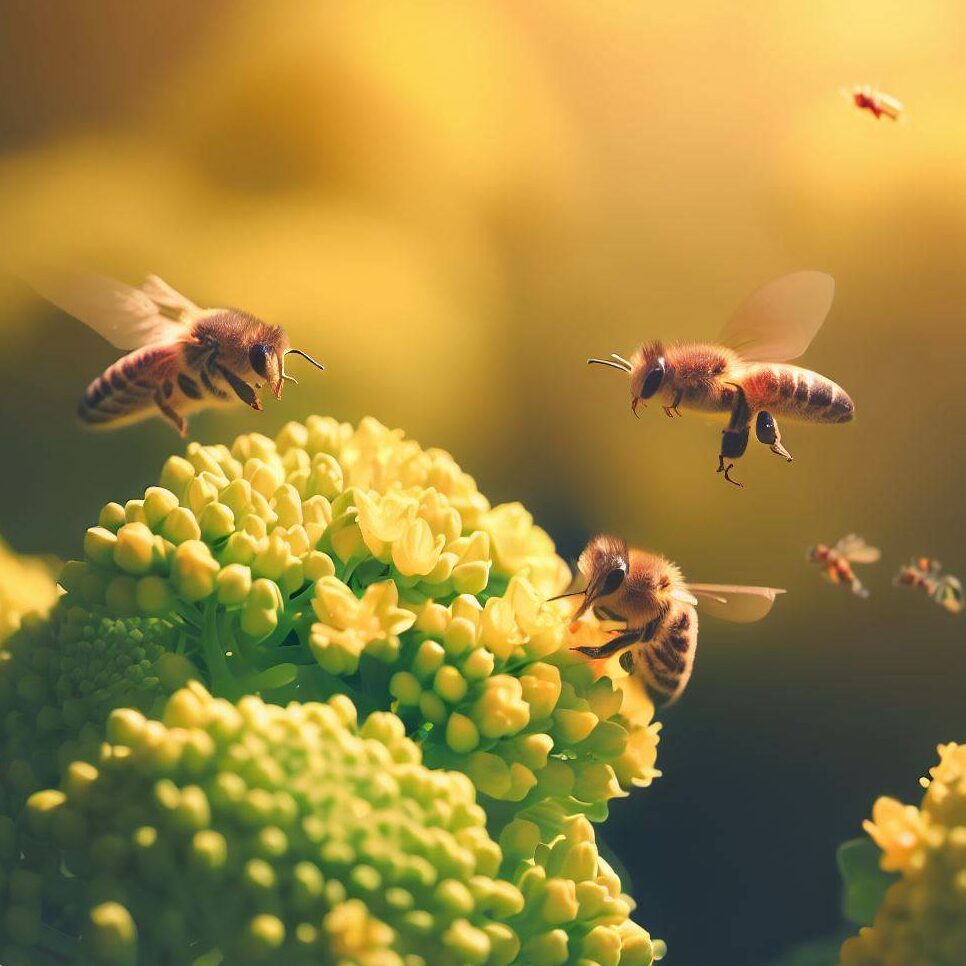
Understanding the pollination process of broccoli is not just a matter of botanical curiosity. It holds significant importance for:
- Seed Saving: Ensuring the genetic purity of the seeds we save for future planting.
- Gardening Success: Maximizing yield and ensuring the health of our broccoli crops.
🥦 Broccoli Basics: Just like understanding the needs of a cherished friend, getting to know the pollination preferences of our garden plants can lead to a more fruitful relationship. 🥦
So, as we embark on this journey to uncover the mysteries of broccoli’s love life, let’s delve deep into the world of pollination, seeds, and the dance of nature that ensures the continuity of this beloved vegetable.
The Basics of Broccoli Reproduction
Broccoli, a member of the Brassica family, has a fascinating reproductive journey that’s deeply intertwined with nature’s rhythms. Let’s delve into the heart of this journey and uncover the basics of how broccoli reproduces.
Broccoli’s Reproductive Process
Broccoli plants produce flowers, and it’s within these flowers that the magic of reproduction happens. Each flower contains both male (stamens) and female (pistils) parts. The process begins when pollen from the stamens reaches the pistils, leading to fertilization.
Self-Pollination vs. Cross-Pollination
Plants have various strategies to ensure their continuation, and broccoli is no exception. The two primary methods of pollination are:
- Self-Pollination: This occurs when a plant fertilizes itself, meaning the pollen from one flower fertilizes the same flower or another flower on the same plant.
- Cross-Pollination: This involves the transfer of pollen from one plant to the flower of a different plant. In broccoli’s case, this is often facilitated by insects, wind, or even water.
🥦 Broccoli Basics: While broccoli can occasionally self-pollinate, it predominantly relies on cross-pollination for genetic diversity and robustness. 🥦
Does Broccoli Reproduce Asexually?
A common query about plants is their mode of reproduction. In the case of broccoli, while the primary method is sexual reproduction through pollination, it doesn’t reproduce asexually in nature. Asexual reproduction, like taking cuttings, isn’t a natural method for broccoli.
Understanding these basics provides a foundation for appreciating the intricate dance of nature that happens in our gardens every day. With this knowledge, we can become more attuned gardeners, nurturing our plants with deeper insight.
The Flowering Stage of Broccoli
The journey of broccoli from seed to mature plant is a captivating tale of growth, transformation, and nature’s wonders. One of the most crucial chapters in this tale is the flowering stage, a pivotal moment that determines the future of the broccoli plant. Let’s explore this stage in detail.
What Triggers Broccoli to Flower?
Broccoli, like many plants, is influenced by environmental cues. The transition from vegetative growth to the flowering stage is often triggered by:
- Day Length: Broccoli is sensitive to the length of daylight. As the days get longer in spring and early summer, broccoli plants receive the signal to start flowering.
- Temperature: Cooler temperatures, especially during the night, can accelerate the flowering process.
🥦 Broccoli Basics: If you’re growing broccoli in your garden, be mindful of sudden temperature drops in spring, as this can cause premature flowering, known as “bolting”. 🥦
Growth and Pre-Flowering Stages
Before the grand display of flowers, broccoli undergoes a series of growth stages. It starts as a seed, sprouts into a seedling, and then grows into a robust plant with large, green leaves. As it matures, you’ll notice the formation of a central head, which is essentially a cluster of flower buds. This is the pre-flowering stage, a prelude to the main event.
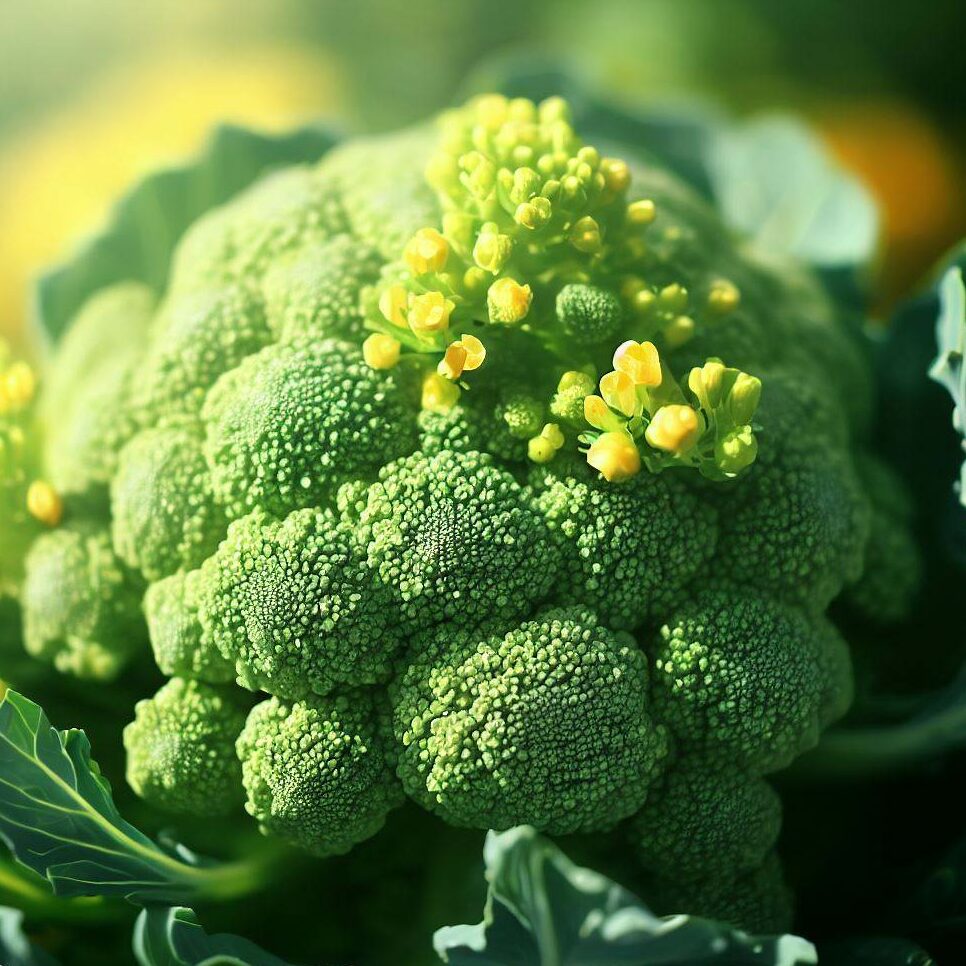
The Significance of the Flowering Stage
The flowering stage is not just a visual treat but is vital for pollination. It’s during this stage that:
- Pollination Occurs: Pollinators visit the flowers, transferring pollen and facilitating the fertilization process.
- Seed Formation Begins: Post-pollination, the flowers start developing into seed pods, ensuring the next generation of broccoli plants.
Understanding the flowering stage’s intricacies can enhance our appreciation for the broccoli plant and help us cultivate it more effectively in our gardens. It’s a testament to the marvels of nature and the intricate processes that sustain life.
The Intricacies of Broccoli Pollination
Diving deeper into the world of broccoli, we uncover the fascinating intricacies of its pollination process. This journey reveals the delicate dance between plants and pollinators, ensuring the continuation of the broccoli lineage. Let’s embark on this exploration together.
Broccoli: An Outcrossed Plant
Broccoli stands out in the plant kingdom as an outcrossed plant. But what does this mean? In simple terms, broccoli prefers to exchange genetic material with other broccoli plants rather than self-pollinating. This genetic exchange enhances the plant’s genetic diversity, making it more resilient and adaptable to various environmental conditions.
🥦 Broccoli Basics: Outcrossing is nature’s way of ensuring genetic diversity, which is crucial for the survival and adaptability of many plant species. 🥦
The Role of Insects in Broccoli Pollination
While broccoli might be a bit picky about its pollination partners, it has some tiny allies to help it out. Insects, especially bees, play a pivotal role in this process. Here’s how:
- Transfer of Pollen: As insects like bees visit broccoli flowers, they inadvertently pick up pollen. Moving from flower to flower, they facilitate the transfer of this pollen, enabling cross-pollination.
- Boosting Seed Production: Effective pollination by insects ensures a higher yield of seeds, vital for the next generation of broccoli plants.
It’s a symbiotic relationship; while the insects get nectar from the broccoli flowers, the broccoli benefits from their pollination services. Nature truly is a web of interconnected relationships!
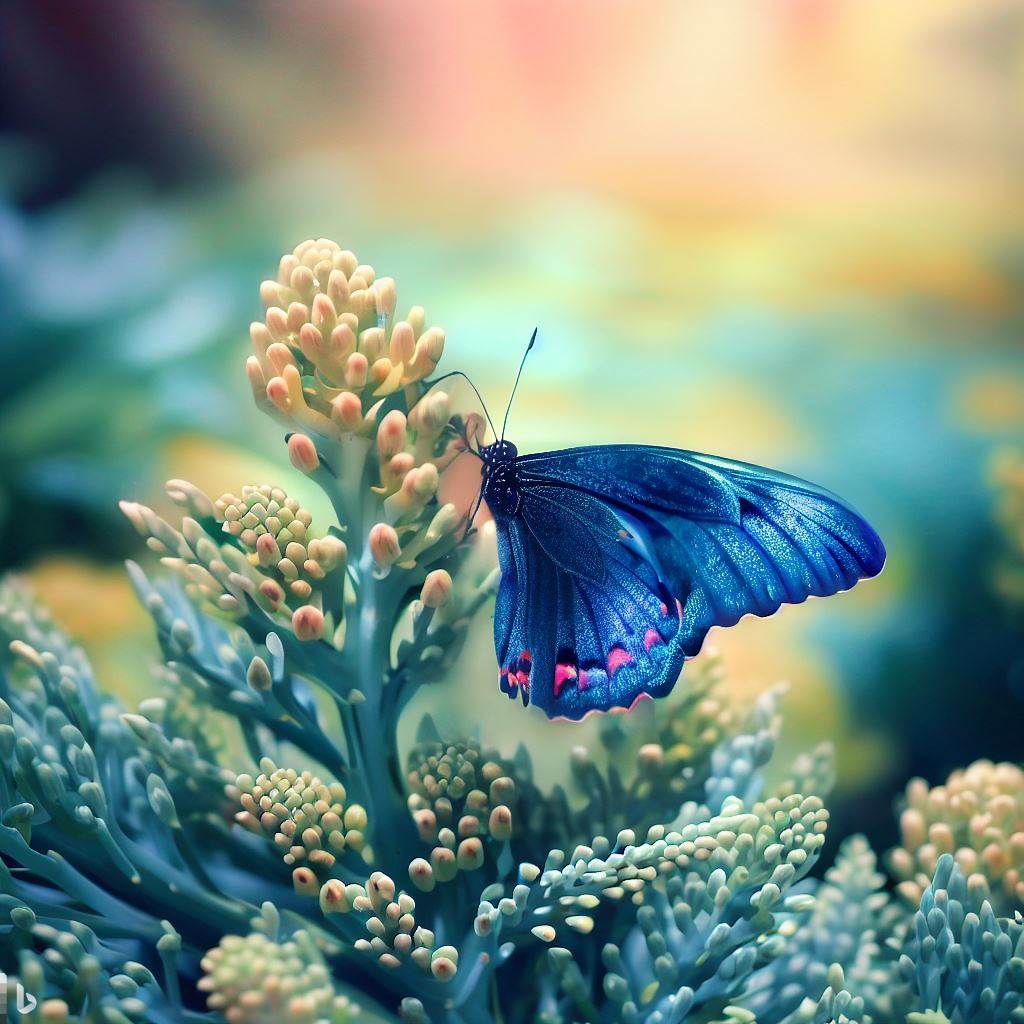
Male and Female Broccoli Plants: Fact or Fiction?
A common question that arises is whether there are distinct male and female broccoli plants. The answer is no. Broccoli plants are monoecious, meaning each plant has both male (staminate) and female (pistillate) reproductive parts. This design allows for the possibility of self-pollination, though, as we’ve learned, broccoli prefers cross-pollination.
🥦 Broccoli Basics: While broccoli has both male and female parts, it’s the dance with pollinators that truly brings its reproductive process to life. 🥦
Understanding the nuances of broccoli pollination gives us a deeper appreciation for this vegetable and the intricate processes that nature orchestrates. It’s a testament to the wonders of the natural world and the delicate balance that sustains it.
Hand Pollination: A Detailed Guide
For those moments when nature needs a helping hand, or when you’re looking to ensure a specific cross, hand pollination comes to the rescue. This age-old technique, while simple, can be a game-changer for your broccoli harvest. Let’s delve into the art and science of hand pollination.
How to Hand Pollinate Broccoli
Hand pollinating broccoli is a delicate process, but with a little patience and the right technique, it can be quite rewarding:
- Choose the Right Time: Early morning is ideal, as the flowers are fresh and the pollen is most viable.
- Identify the Flowers: Look for mature flowers that are fully open.
- Collect Pollen: Using a small brush or cotton swab, gently collect pollen from the male parts of the flower.
- Transfer Pollen: Gently brush the pollen onto the female parts of another flower.
🥦 Broccoli Basics: Always use a clean brush or swab for each plant to avoid unwanted cross-pollination. 🥦
Advantages and Disadvantages of Hand Pollination
- Advantages: Greater control over breeding, increased seed production, and assurance of pollination in low insect activity areas.
- Disadvantages: Time-consuming, potential for reduced genetic diversity, and it may not be as effective as natural pollination.
Other Hand Pollination Examples
Broccoli isn’t the only plant that can benefit from hand pollination. Other examples include:
- Squash: Especially useful for gardeners aiming for specific squash hybrids.
- Tomatoes: While they typically self-pollinate, hand pollination can boost yields.
- Peppers: Hand pollination can help when growing multiple varieties close together.
Hand pollination, while an added step in the gardening process, can be a valuable tool in the gardener’s toolkit. Whether you’re aiming for a specific cross or simply looking to boost your harvest, understanding this technique can make all the difference.
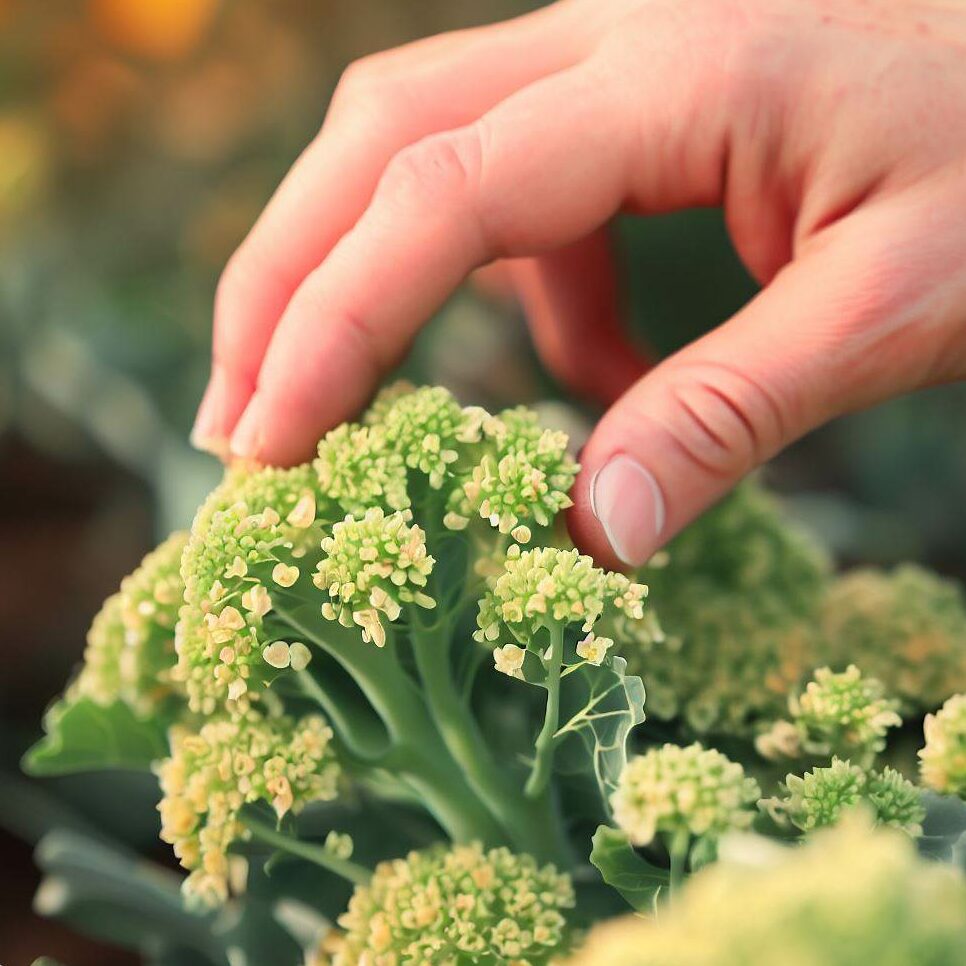
Broccoli and Its Vegetable Neighbors
When it comes to gardening, understanding the relationships between different plants is crucial. Just like in any community, some neighbors get along better than others. Let’s explore broccoli’s interactions with its vegetable neighbors and uncover some garden secrets.
Does Broccoli Cross-Pollinate with Other Vegetables?
Broccoli, being a member of the Brassica oleracea family, can indeed cross-pollinate with other members of this group. This includes vegetables like cabbage, kale, and cauliflower. So, if you’re seed-saving, it’s essential to be aware of this potential mingling.
Is Cauliflower Self-Pollinating?
Cauliflower, like broccoli, is primarily an outcrossing plant. While it can occasionally self-pollinate, it largely relies on external pollinators for seed production.
Will Broccoli and Cauliflower Cross-Pollinate?
Yes, since both broccoli and cauliflower belong to the same species, Brassica oleracea, they can cross-pollinate. If they flower at the same time and are in proximity, there’s a chance for some unexpected hybrids!
🥦 Broccoli Basics: If you’re keen on keeping your broccoli and cauliflower seeds pure, consider planting them at different times or using barriers like row covers. 🥦
What Not to Plant Next to Broccoli and Why
- Strawberries: They can attract pests that harm broccoli.
- Tomatoes: Both compete for the same nutrients, potentially stunting growth.
- Grapes: Chemicals from broccoli can hinder grape growth.
Understanding the dynamics between broccoli and its neighbors can make a world of difference in your garden. By ensuring harmonious plant relationships, you set the stage for a thriving, bountiful harvest.
Broccoli Seeds: From Flower to Harvest
The journey of a broccoli seed is a fascinating tale of nature’s wonders. From the delicate flowers to the bountiful harvest, let’s delve into the world of broccoli seeds and their lifecycle.
Does Broccoli Have Seeds?
Absolutely! Just like many plants, broccoli produces seeds to ensure the next generation. These seeds are nestled within the pods that form after the flowering stage.
Where Do Broccoli Seeds Come From?
Broccoli seeds develop from the flowers once they’ve been pollinated. As the flowers mature and fade, seed pods begin to form. Inside these pods, the magic happens, and seeds start to grow.
🥦 Broccoli Basics: If you’re keen on seed-saving, allow some of your broccoli plants to flower and produce seed pods. It’s a delightful sight! 🥦
How Many Seeds Does a Broccoli Plant Produce?
A single broccoli plant can produce several hundred to over a thousand seeds, depending on the variety and growing conditions.
Harvesting and Storing Broccoli Seeds
- Harvesting: Wait for the seed pods to dry out on the plant. Once they’re brown and crispy, it’s time to harvest.
- Storing: Store the seeds in a cool, dry place. Using envelopes or small jars can help keep them organized.
Understanding the lifecycle of broccoli seeds can enhance your gardening experience. By nurturing these tiny wonders, you pave the way for future harvests and the joy of growing your own food.
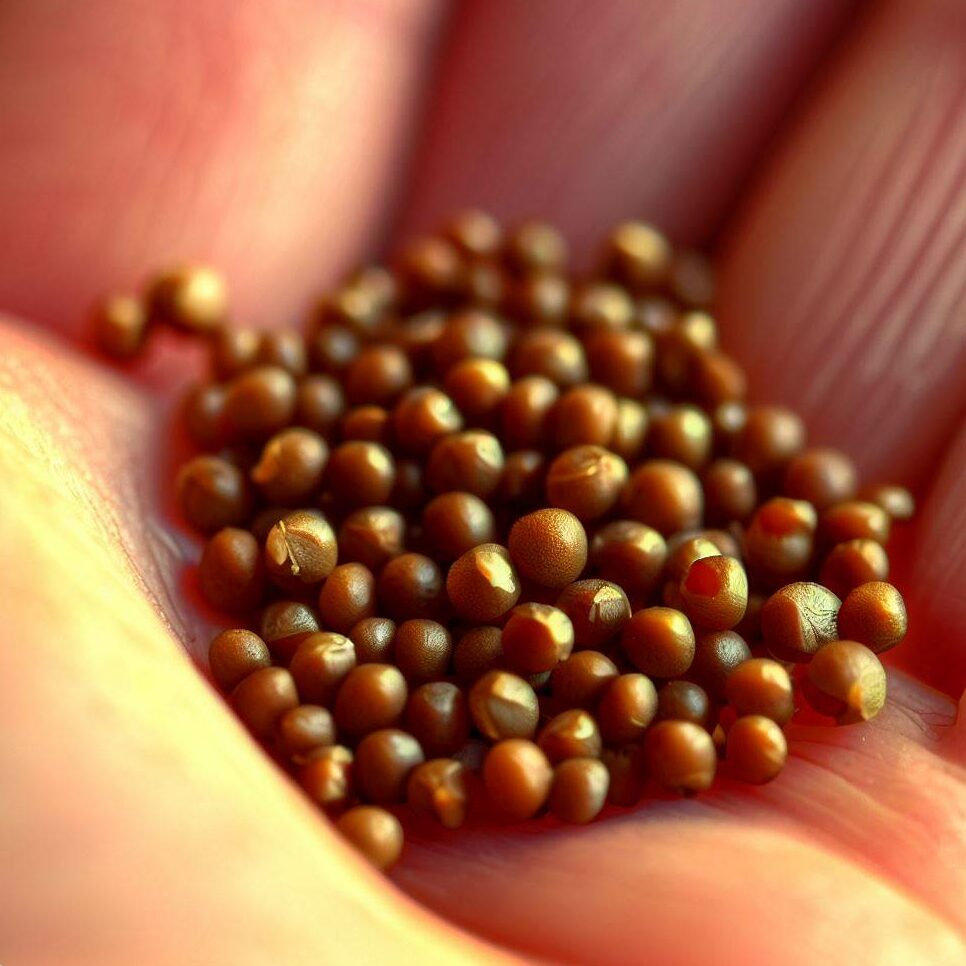
Conclusion
As we wrap up our journey into the world of broccoli’s pollination, it’s evident that understanding this process is more than just a gardener’s curiosity. It’s a key to unlocking the full potential of our gardens.
The Heart of Successful Gardening
Knowing the intricacies of broccoli’s reproductive cycle empowers us to cultivate healthier plants and harvest bountiful yields. Whether you’re a seasoned gardener or just starting out, this knowledge is a game-changer.
🥦 Broccoli Basics: Every plant has its unique story. The more we learn, the deeper our connection with nature becomes. 🥦
Seed Saving: A Legacy for Tomorrow
By understanding and respecting the pollination process, we also set the stage for successful seed saving. It’s a beautiful way to carry forward the legacy of our favorite plants, season after season.
In the grand tapestry of nature, broccoli’s reproductive journey is a testament to the wonders that lie in every corner of our gardens. As we nurture our plants, we’re also nurturing our souls, forging a bond with the earth that’s both timeless and profound. Happy gardening!
Fun Facts and Pro-Tips
- Did You Know? If your broccoli is flowering, it’s signaling that it’s past its prime for eating but perfect for seed saving!
- Broccoli and cauliflower are like close cousins in the plant world. They can even cross-pollinate!
- Pro Tip: Always harvest broccoli in the morning for the crispest taste.
- Broccoli is rich in sulforaphane, a compound believed to have potent health benefits.
🥦 Broccoli Basics: Broccoli flowers are not just pretty; they’re edible too! Add them to salads for a splash of color and a peppery kick. 🥦
